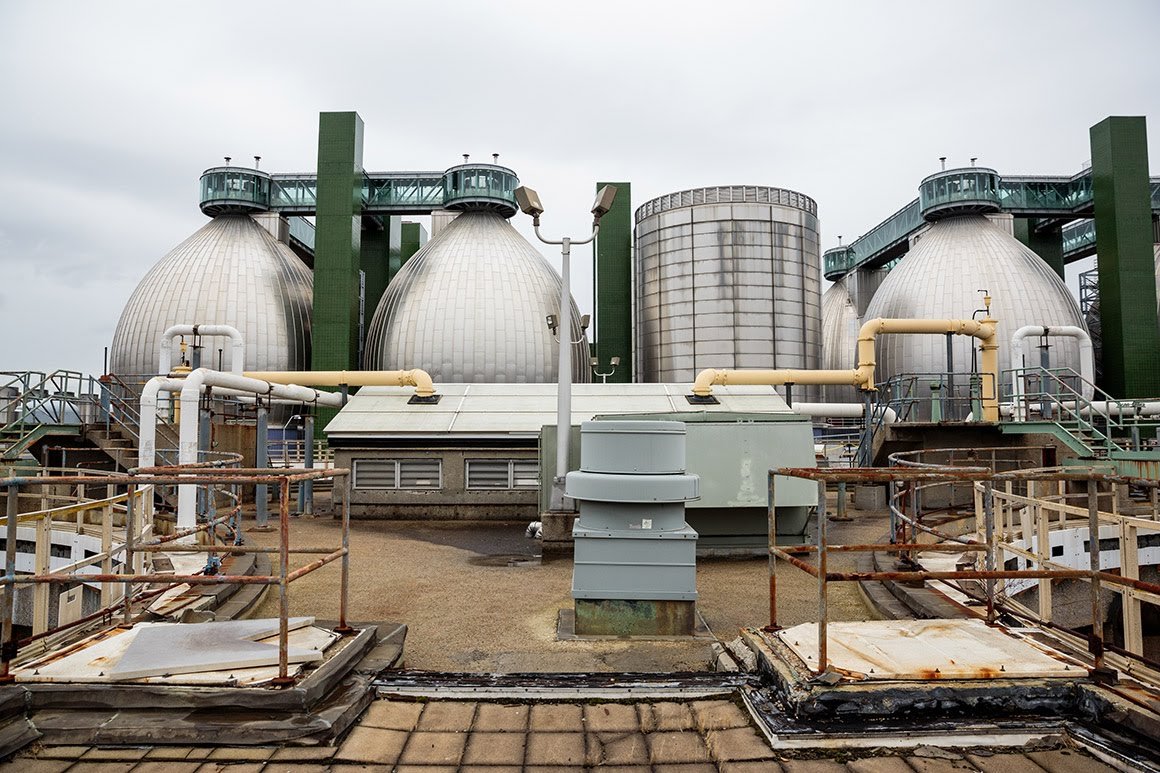
More and more cities are making biogas out of tons of wasted food instead of sending it to landfills.
Every year, America throws away more than 80 million pounds of food. More than three-quarters of it ends up in landfills, where it takes up more room than any other kind of waste and produces as much greenhouse gases as 3.4 million vehicles.
The food waste that doesn’t end up decomposing at the dump is most commonly diverted to compost facilities that turn organic material into nutrient-rich soil. But an increasing number of municipalities around the country are looking to do even more with this untapped resource by turning it into usable energy called biogas.Driven by legislation and public demand to limit the size of their landfills and reduce carbon footprints—eight states have food-recycling laws, six have food waste bans and even more states or cities have enacted recycling legislation—at least half a dozen American cities have begun using anaerobic digestion to handle food waste.
Widespread in Europe, anaerobic digestion uses bacteria to break down organic material in an oxygen-free environment—a faster process than traditional composting, which depends on oxygen to do the work. It’s the same technology cities already use in wastewater treatment.
Los Angeles is expanding its food-to-biogas program, a private facility recently opened in Salt Lake City to take restaurant food waste, a fuel company in Philadelphia announced plans to build a food-to-fuel processing plant last year, and in Connecticut, one anaerobic digester is running while three others are scheduled to be built.
One of the country’s largest facilities is in Brooklyn, New York, which in 2016 began using its own Newtown Creek Wastewater Treatment Plant to process 130 tons of liquefied food waste, roughly 3 percent of the city’s daily food waste. And food waste is just a fraction of the sewage that the plant handles in its eight gleaming egg-shaped silver tanks. But officials expect that Newtown will produce approximately 190 to 275 million cubic feet of natural gas for local electricity generation by next year.
“It really is an exciting sort of sustainability circle,” said Pam Elardo, the city's deputy commissioner of the Bureau of Wastewater Treatment.
But despite the proven technology, Newtown is still among a minority of the nation's wastewater facilities handling food waste. Indeed, none of New York’s remaining 13 wastewater treatment plants processes food waste.
“We are at one-seventh, maybe even one-tenth of the potential of this industry,” said Patrick Serfass, the executive Director of the American Biogas Council. According the organization, there are over 2,000 anaerobic digesters in the country built to produce biogas, but most that process food waste are on farms not in cities. Ler mais ....SUSTAINABILITY, FOOD, WHAT WORKS
By LJ DAWSON
11/21/2019 05:02 AM EST
LJ Dawson is an editorial intern at Politico.